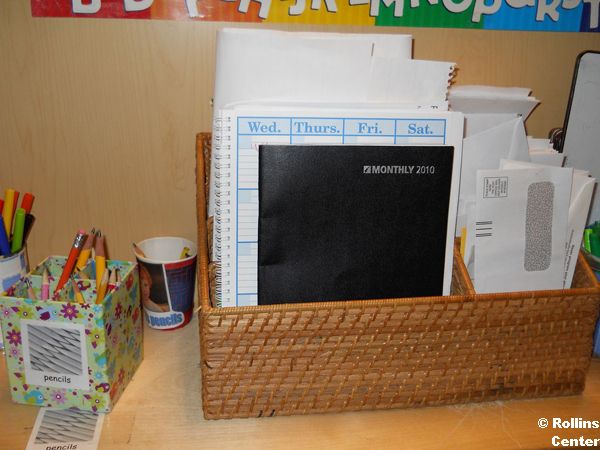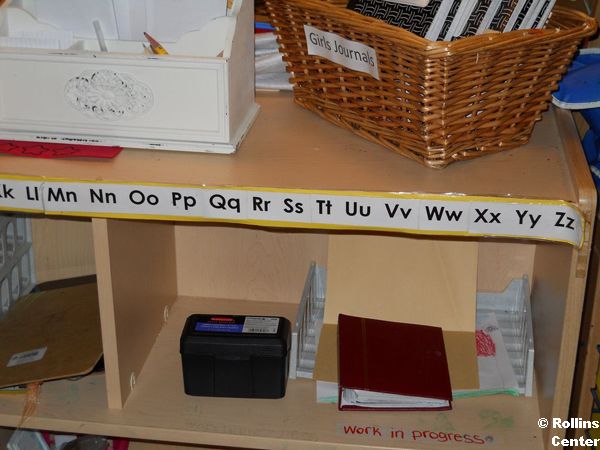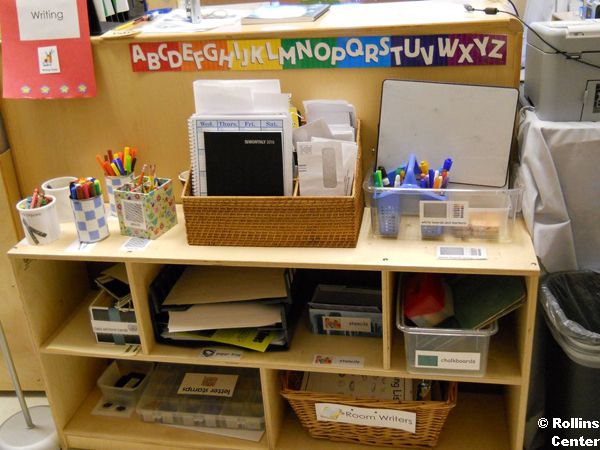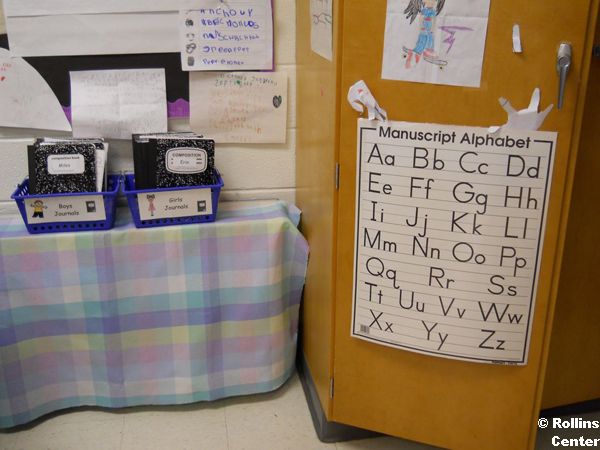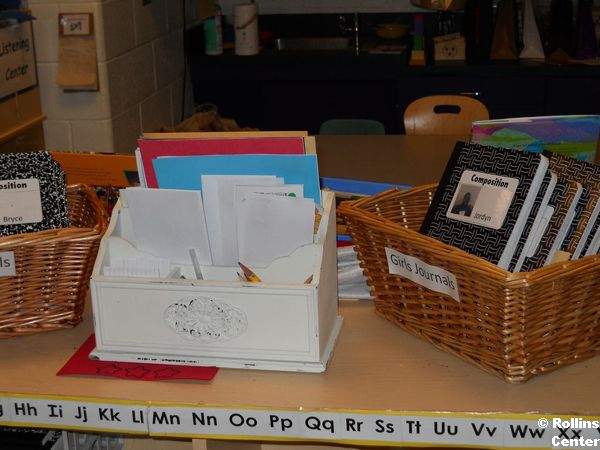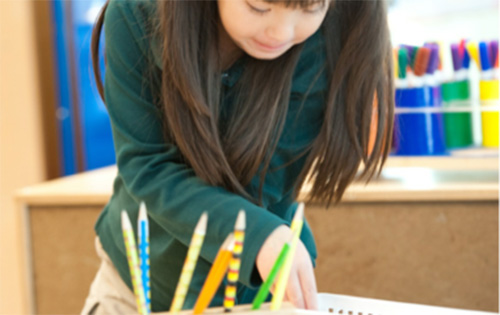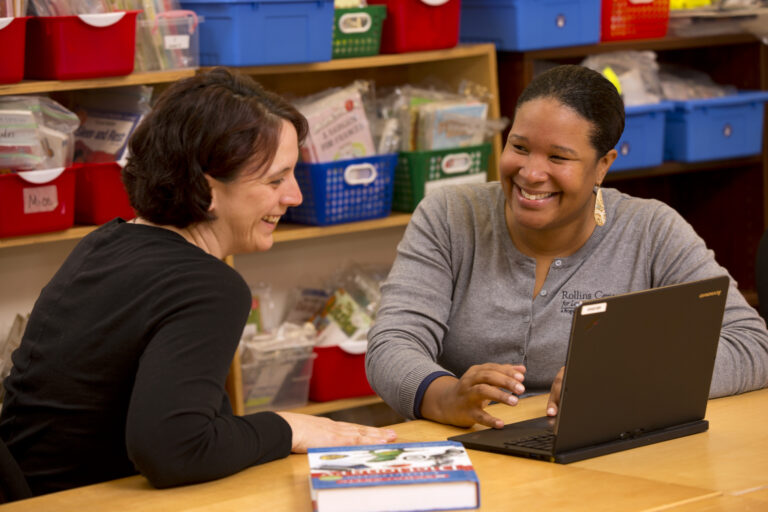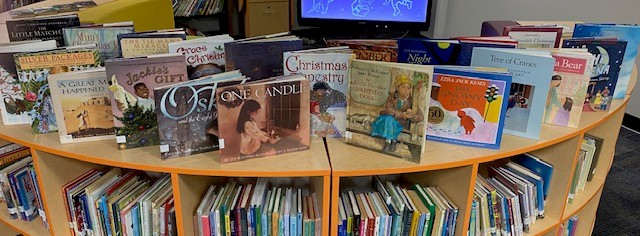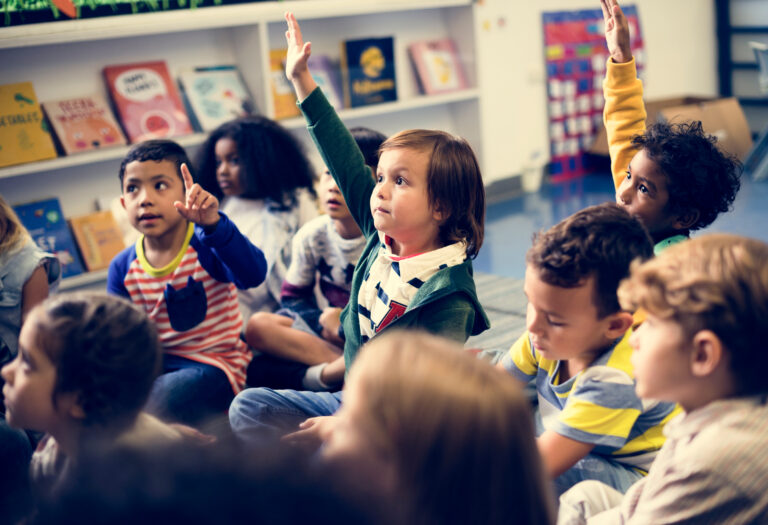Overview
Every center provides us with opportunities to push in and pull out language. One way we build language is by including books and writing materials in every center. Although each center has a different focus, basic literacy tools have a place in all of them. Check out the video and images the video below to learn more.
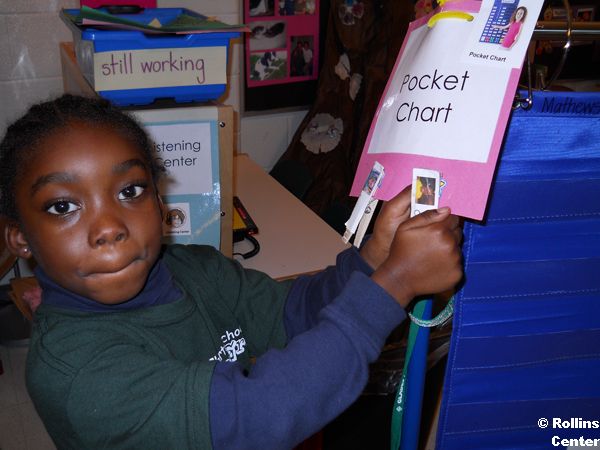
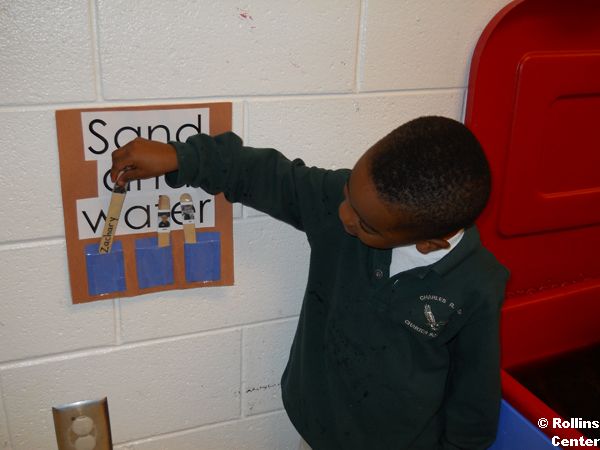
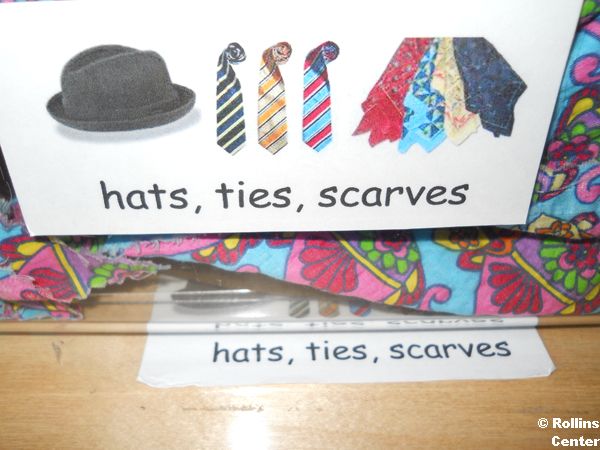
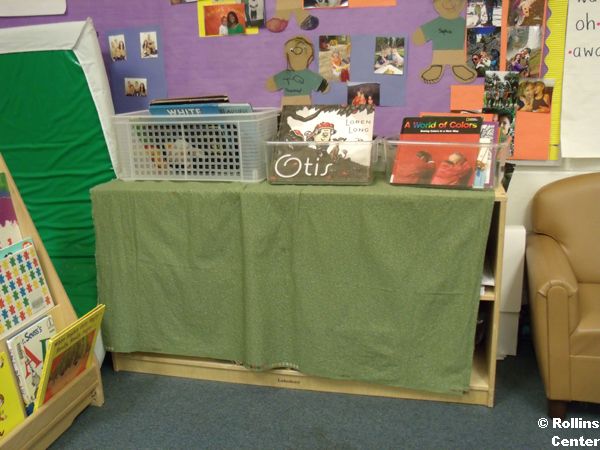
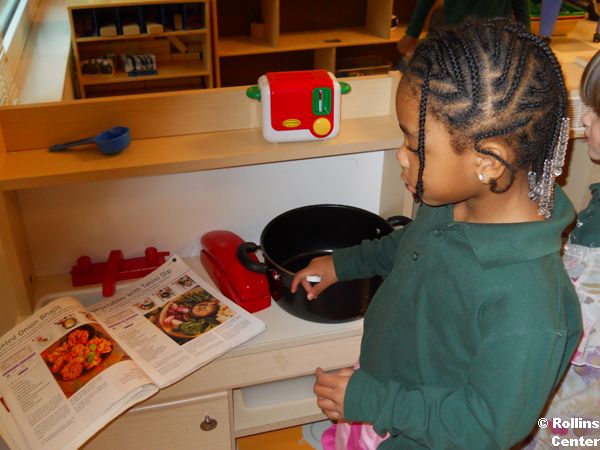
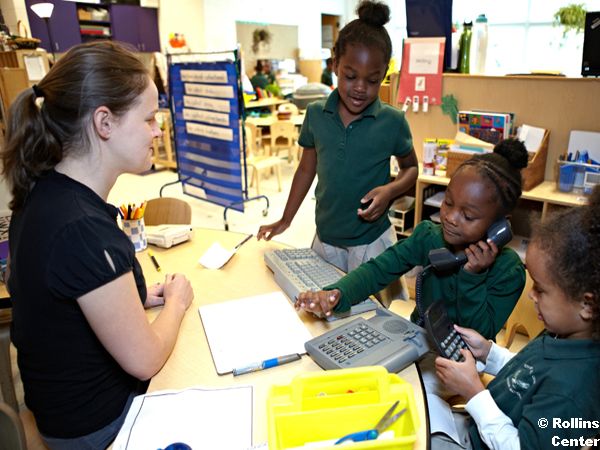
Art Center
There are many ways to interact with children and encourage language development at the art center. Teachers can encourage children to talk about their work by using open-ended prompts such as, “Tell me about your painting, collage, sculpture.” After children have finished, encourage them to sign their artwork on the front or back. When children dictate a description of their work, write their words on a separate piece of paper unless they give permission to write on their artwork. Also, encourage children to talk with their peers about their artwork. These conversations occur more naturally when children work next to each other.
Materials
- Table and chairs
- Easel
- Smocks
- Drying rack
- Craft-making materials (scissors, glue, tissue paper, clay, etc.)
- Various types and sizes of paper
- Painting and drawing materials (markers, crayons, paint, brushes, etc.)
- Collage materials
- Labeled storage (photo + text)
- Writing materials
- Related books
See the Art Center set up in action below!
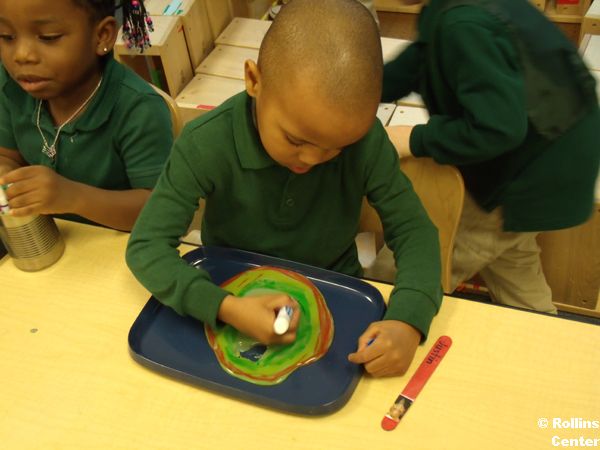
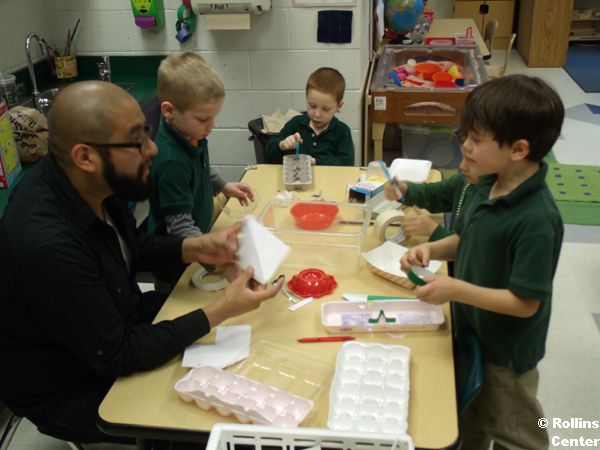
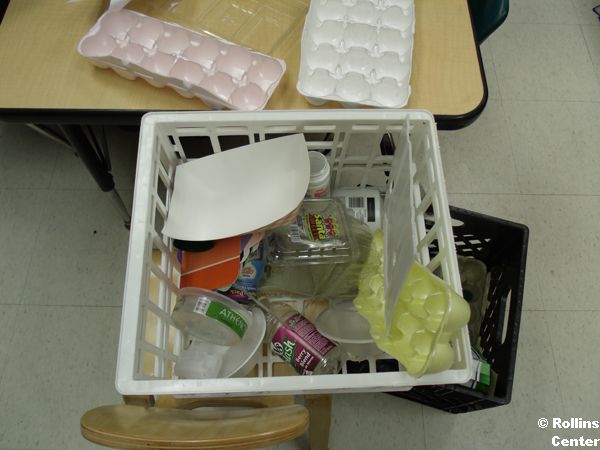
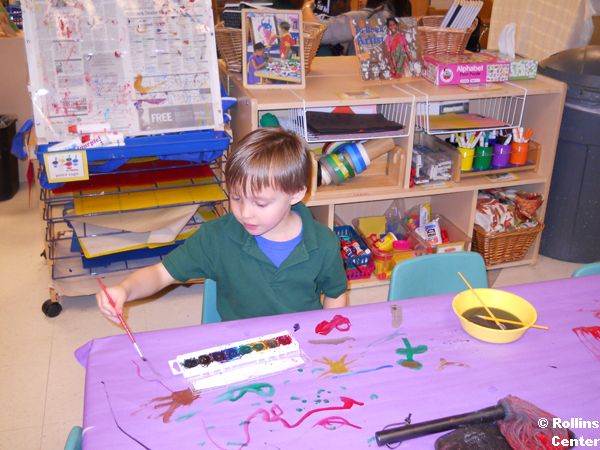
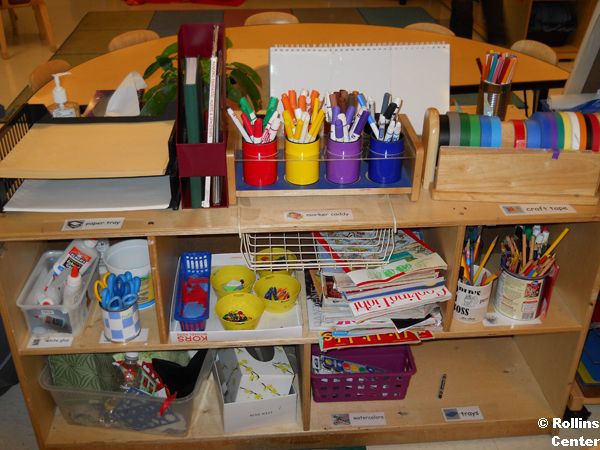
Block Center
The block center provides an opportunity not only for imaginative play but also for experimenting with math concepts. Children may design a zoo one day and then construct a symmetric apartment building the next. With a well-stocked block area, teachers can refer to books or photos of earlier structures to inspire children’s creativity. Using the writing materials, teachers model how to create plans or make signs for their creations. Observe and listen to the children before commenting about what you see. Our goal is to open the door for conversation, but let the children drive it.
Materials
- Table and chairs
- Easel
- Smocks
- Drying rack
- Craft-making materials (scissors, glue, tissue paper, clay, etc.)
- Various types and sizes of paper
- Painting and drawing materials (markers, crayons, paint, brushes, etc.)
- Collage materials
- Labeled storage (photo + text)
- Writing materials
- Related books
See the Block Center set up in action below!
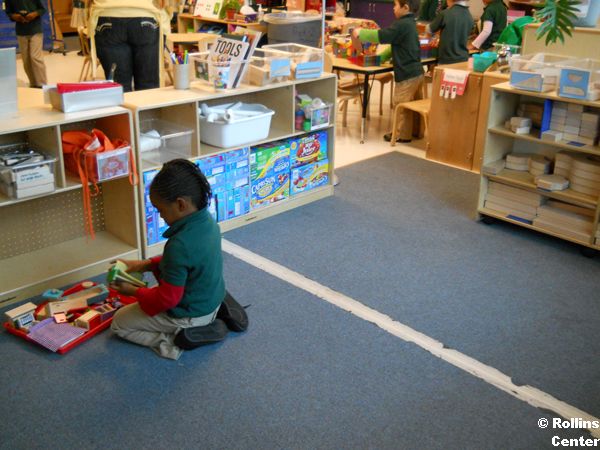
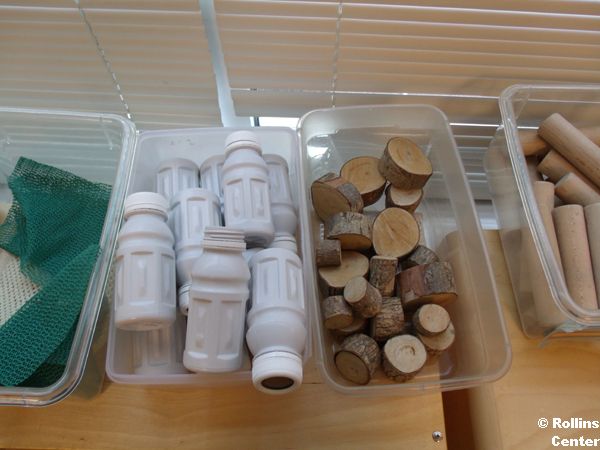
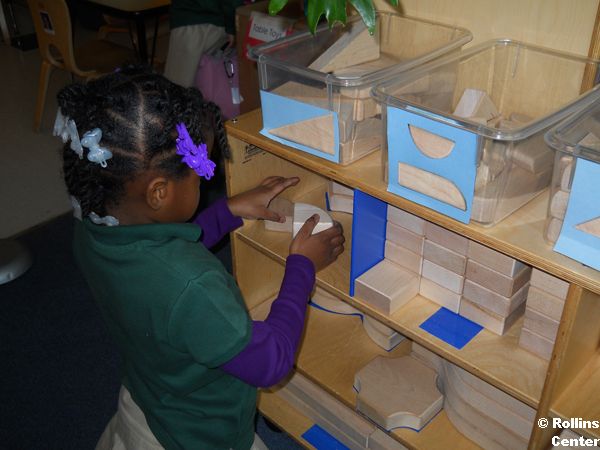
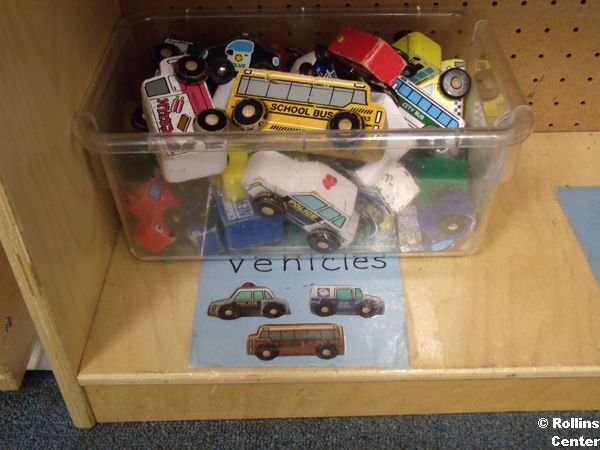
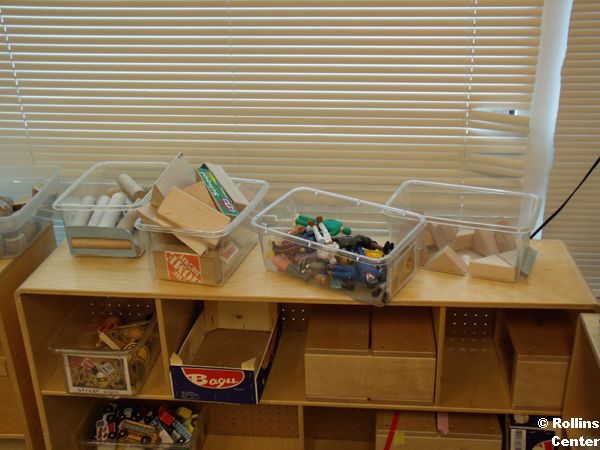
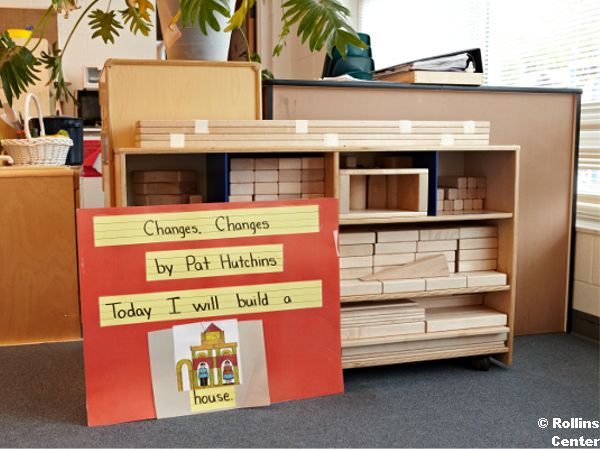
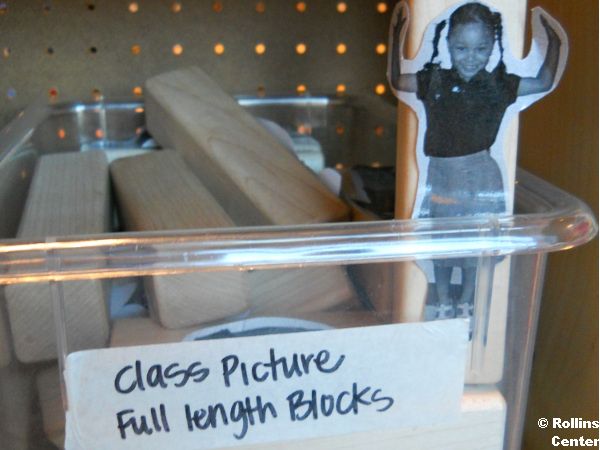
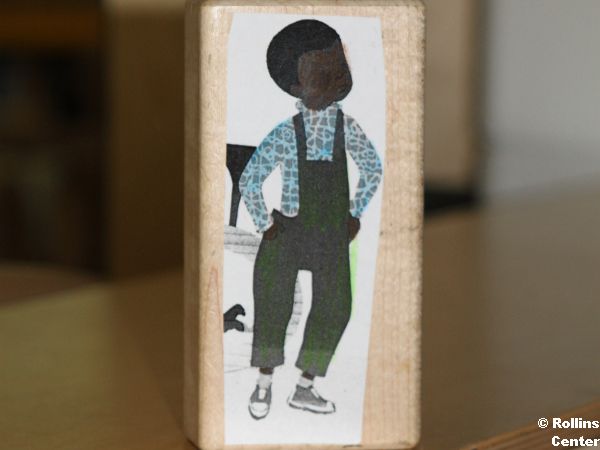
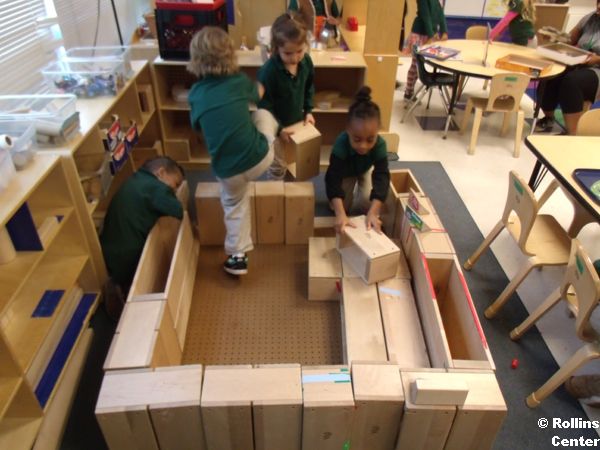
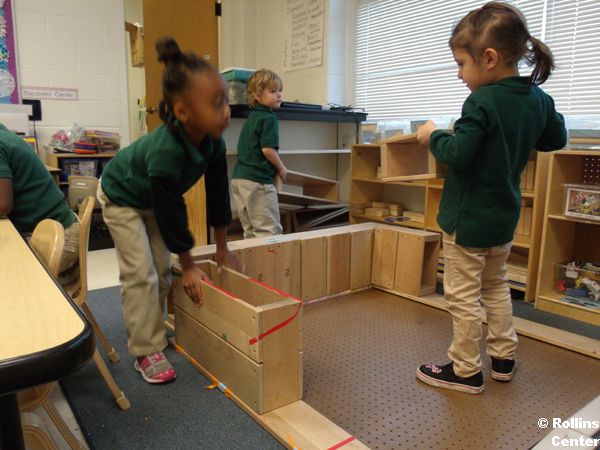
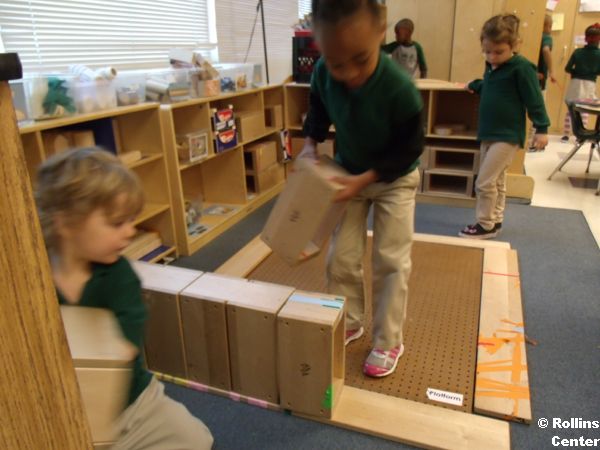
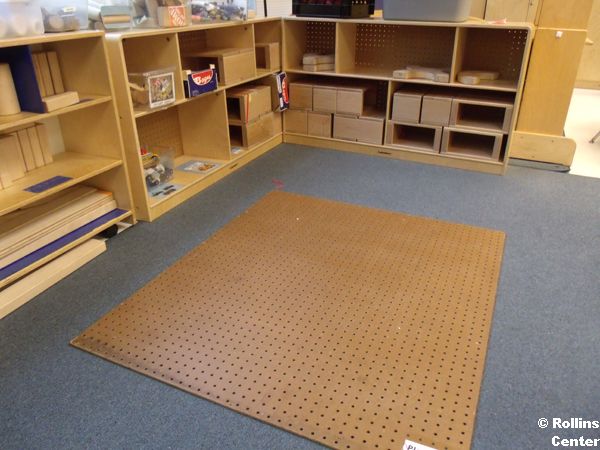
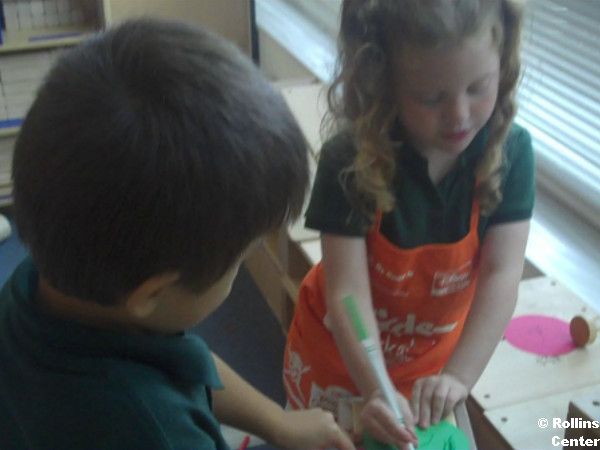
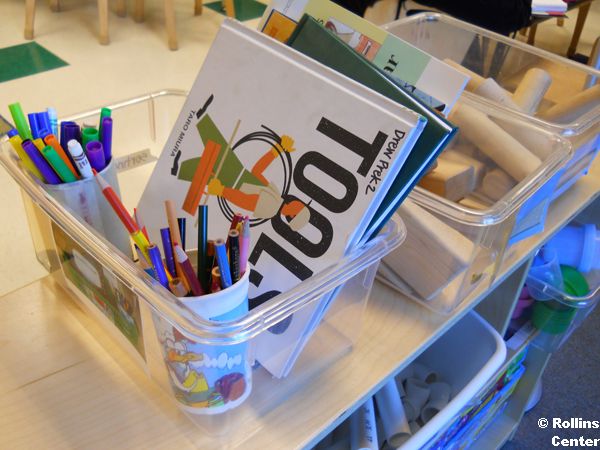
Book and Listening Center
Children love to revisit familiar books, so after story books or predictable texts have been read at least twice to the whole group, copies should be placed in the book center. If recordings of familiar books are available, they should be put in the listening center along with other readings of children’s books. And let’s not forget new books. Children get excited when they discover a book in the center that’s new to them. For some simple stories, having felt figures of the characters, puppets, or stick puppets allows children to retell the stories. Theme-related informational texts that have been introduced by the teacher enable children to explore topics further.
Materials
- Book shelf
- Soft materials (pillows, rugs, bean bags, etc.)
- Variety of books (various themes and types)
- Puppets
- Flannel board stories
- Cassette, CD, or MP3 player with headsets
- Labeled storage (photo + text)
- Writing materials
See the Book and Listening Center set up in action below!
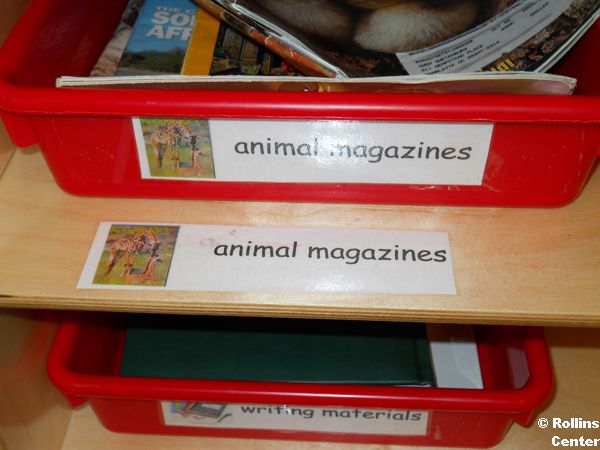
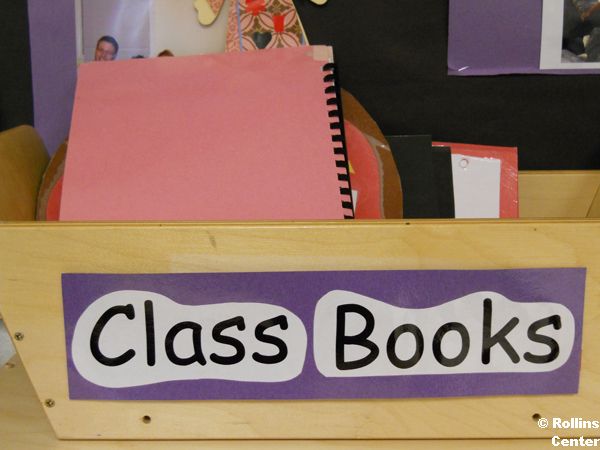
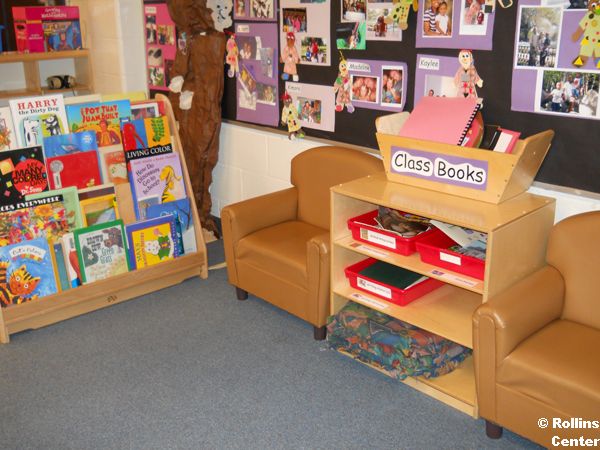
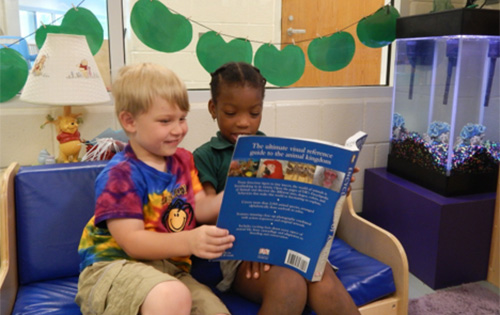
Dramatic Play Center
Many classrooms have Housekeeping or Home Living centers where children role-play cooking and keeping house. We recommend thinking of it as a Dramatic Play center. This way, you’re free to change the center whenever it’s useful. Changing themes and props allows the teacher to push-in a broader range of vocabulary and concepts.
Materials
- Housekeeping furniture
- Dress-up clothes (to represent various roles)
- Dolls and doll furniture
- Mirror
- Kitchen items (pots, pans, dishes, etc.)
- Found materials (food containers and bottles, etc.)
- Items specific to the particular theme of the center (farmer’s market, office, hair salon, etc.)
- Labeled storage (photo + text)
- Writing materials
- Related books
See the Dramatic Play Center set up in action below!
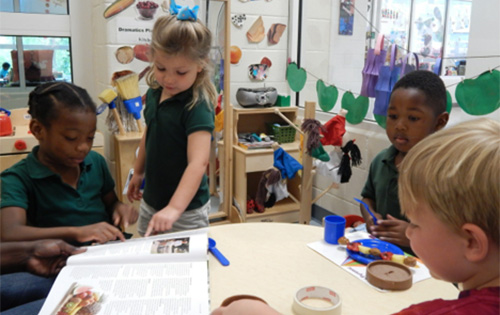
Puzzles and Manipulatives Center
This center provides children with opportunities to practice math and problem-solving skills. There is also the opportunity to develop fine motor skills with the use of smaller manipulatives. Because many manipulatives are multicolored and come in various sizes, children can practice sorting and classifying. They can also create patterns. Although the manipulatives center might seem to focus only on math concepts, there are still opportunities to build language. The center should include writing materials for children to record their thoughts or to chart out ideas before beginning their work. Teachers can also push-in and pull-out target vocabulary in this center.
Materials
- Counting materials (cubes, counters, etc.)
- Sorting items (buttons, vehicles, beads, etc.)
- Scales
- Items for measuring (rulers, etc.)
- Puzzles
- Math-related materials (geo boards, shapes, etc.)
- Lacing cards
- Peg boards
- Found materials (rocks, bottle caps, etc.)
- Labeled storage (photo + text)
- Writing materials
- Related books
See the Puzzles and Manipulatives Center set up in action below!
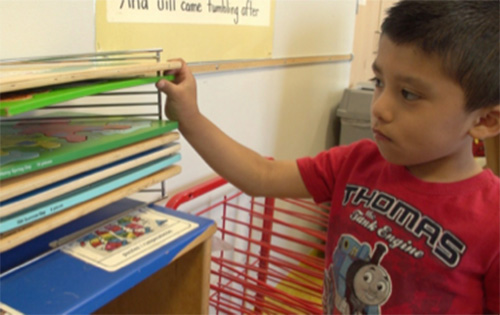
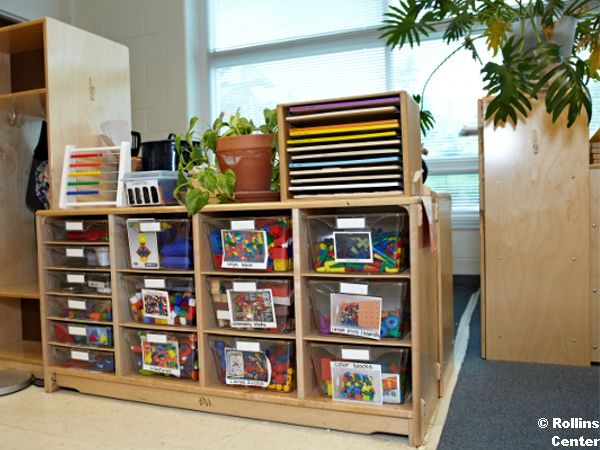
Science or Discovery Center
The science center offers an opportunity for observation, exploration, and experimentation with theme-related materials. Learning is supported by informational texts and investigative tools such as tweezers, magnifying glasses, thermometers, scales, or other measuring tools. Some types of observations may change over time, such as plant growth, so keeping a written record is essential to understanding the topic. This also provides opportunities for purposeful writing. Teachers can model how to record observations and provide assistance for children who need help. Some children may be able to record by drawing and writing about their own observations while others may need the teacher to take dictation.
Materials
- Magnets
- Binoculars
- Tweezers
- Magnifying glasses
- Thermometers
- Scales
- Rulers or other measuring tools
- Popsicle sticks
- Living things (fish, plants, etc.)
- Natural items (rocks, minerals, seashells, mounted insects, etc.)
- Labeled storage (photo + text)
- Writing materials
- Related books
See the Science or Discovery Center set up in action below!
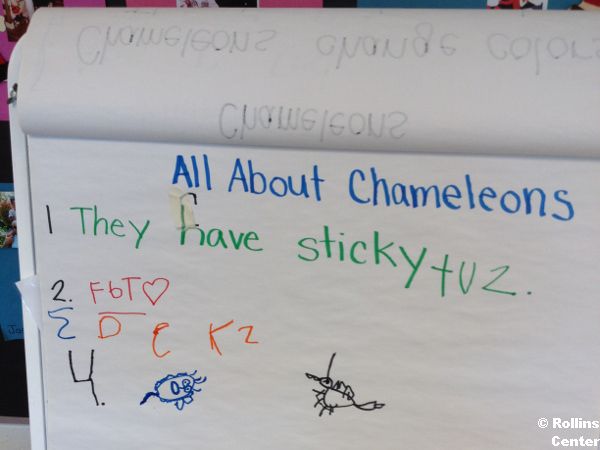
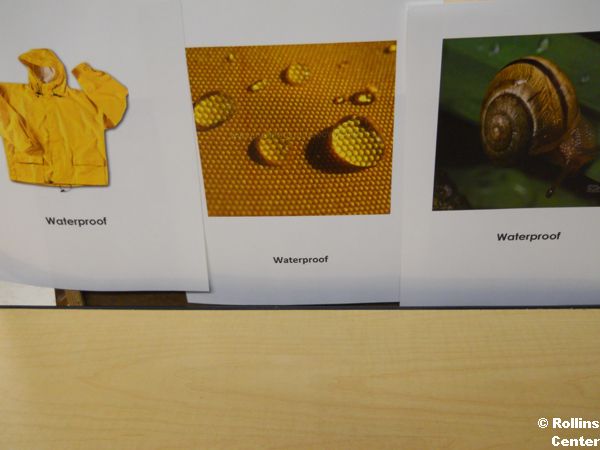
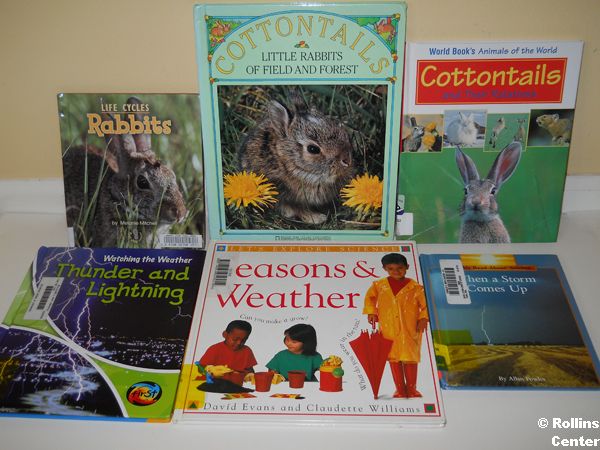
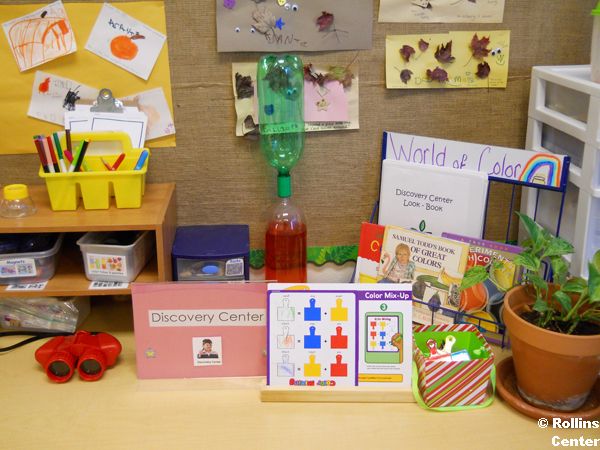
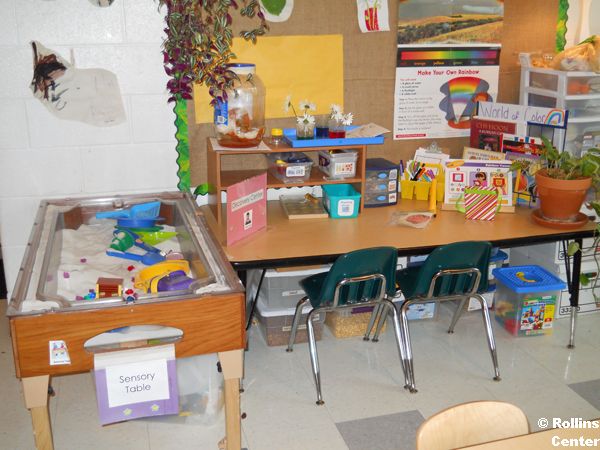
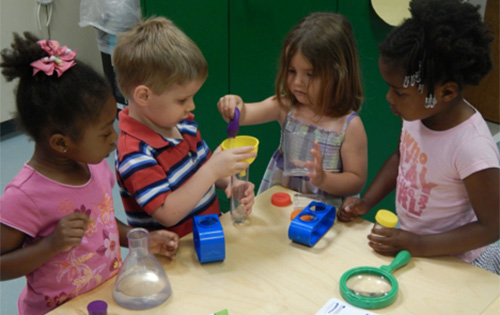
Sensory Center
The sensory center offers the opportunity to encourage children’s language use as they explore properties of physical science. It’s a place where children can explore using all of their senses and develop fine motor skills. Children can also develop and practice vocabulary specific to their observations and experiences in this center. Teachers facilitate building language and learning concepts through meaningful conversations as they observe children.
Materials
- Sensory table
- Various materials to rotate in sensory table (sand, beans, noodles, etc.)
- Items for digging and pouring (scoops, buckets, spoons, shovels, etc.)
- Labeled storage (photo + text)
- Writing materials
- Related books
See the Sensory Center set up in action below!
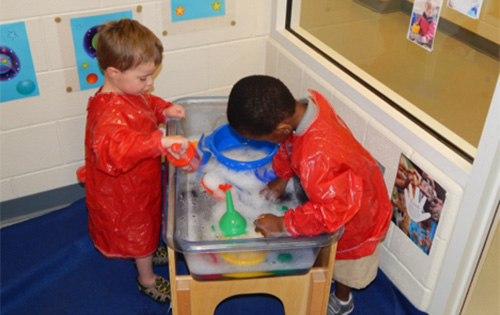
Writing Center
In addition to encouraging children to write in different centers, specific activities in the writing centeroffer further opportunities to explore storytelling and written language. The writing center should be well stocked with supplies. All attempts at written communication should be accepted and valued.
Materials
- Alphabet
- Variety of writing materials (pens, pencils, markers, various sizes)
- Found materials (envelopes, forms, cards, stationary, etc.)
- Variety of paper (lined, unlined, colored, notebooks, etc.)
- Labeled storage (photo + text)
- Related books
See the Writing Center set up in action below!
